There’s something magical about starting your morning with a burst of color and flavor — and that’s exactly what a pitaya bowl brings to the table. In this article, we’re diving into everything you need to know about pitaya bowls, from their vibrant ingredients and health perks to how they compare with acai bowls. You’ll learn what makes this tropical treat so loved and how to make your own right at home. We’ll also cover the most commonly asked questions about pitaya bowls — from what’s in them to whether they’re truly as healthy as they look.
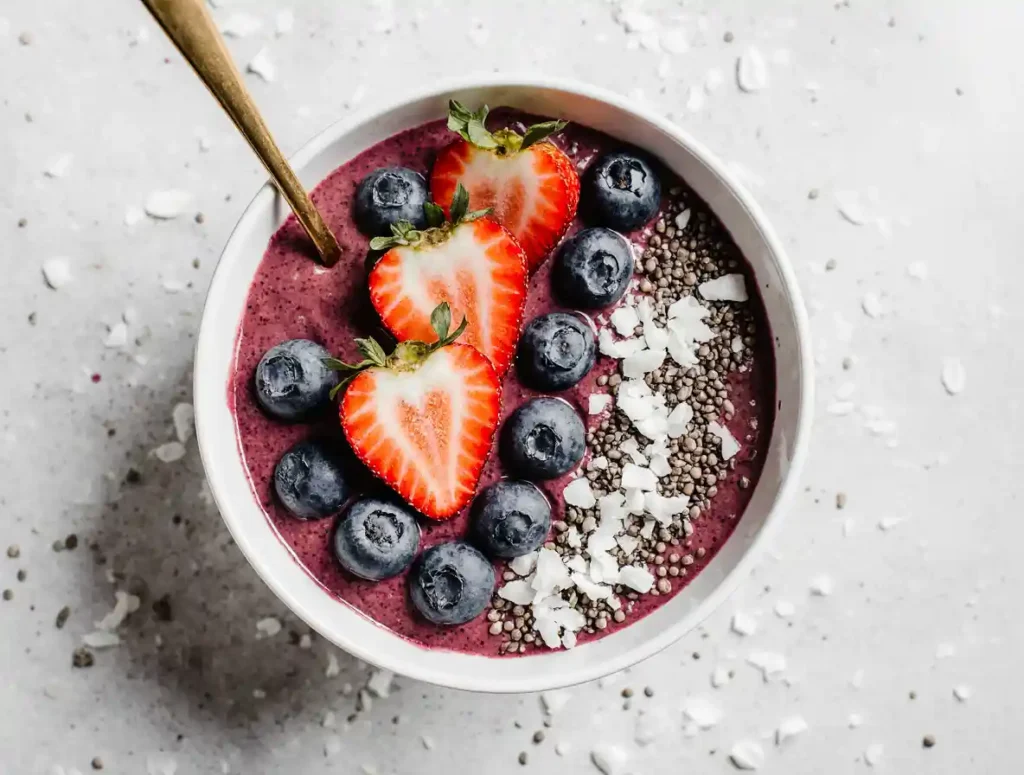
Table of Contents
Table of Contents
A memory of my first bite into a pitaya bowl
I still remember the first time I had a pitaya bowl. It was one of those warm mornings where the air smelled like summer, and my kitchen counter was covered in chopped fruit. I’d just come back from a weekend farmer’s market with a bright pink dragon fruit, and honestly, I wasn’t even sure what to do with it. But after tossing it into my blender with some banana and a splash of almond milk, topping it with fresh berries, coconut flakes, and crunchy granola — I was hooked. One spoonful was all it took. Creamy, cold, fruity, and slightly sweet, it felt like eating a smoothie and dessert all in one.
What I didn’t expect was how much that first pitaya bowl would change how I thought about breakfast. It wasn’t just beautiful; it was energizing and light, but filling at the same time. It also got me excited to try different topping combos and flavors every week. From there, pitaya bowls became a staple in my kitchen — perfect for mornings when I wanted something that felt special but took just minutes to make.
These days, my pitaya bowl routine feels just as much about joy as it does about health. It’s not just breakfast — it’s a little moment of brightness I look forward to.
Print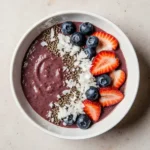
Pitaya Bowl Bliss: A Bright, Tasty Start to Your Day
- Total Time: 10 mins
- Yield: 2 servings
- Diet: Vegan
Description
This bright, fruity pitaya bowl blends frozen strawberries, mango, pineapple, and pitaya powder for a healthy, colorful breakfast.
Ingredients
1 cup frozen sliced strawberries
1/2 cup frozen mango chunks
1/4 cup frozen pineapple chunks
Half a ripe banana
1 1/2 tablespoons freeze-dried pitaya powder
2–6 tablespoons pineapple juice
Toppings: fresh fruit, gluten-free granola, shredded coconut, maple syrup or honey
Instructions
Add frozen fruit, banana, pitaya powder, and 2 tablespoons pineapple juice to a blender or food processor.
Pulse for 30 seconds to break down the fruit.
Blend continuously, adding more pineapple juice as needed until you reach a thick, soft-serve consistency.
Divide into two bowls.
Add desired toppings: fresh fruit, granola, coconut, and a drizzle of syrup.
Serve immediately and enjoy!
Notes:
Use less juice for a thicker consistency.
For extra protein, blend in Greek yogurt or plant-based protein powder.
This recipe is naturally vegan (use maple syrup) and gluten-free.
- Prep Time: 10 mins
- Cook Time: 0 mins
- Category: Breakfast, Smoothie Bowl
- Method: Blended
- Cuisine: Tropical
Nutrition
- Serving Size: 1 bowl
- Calories: 220
- Sugar: 20g
- Sodium: 15mg
- Fat: 3g
- Saturated Fat: 1g
- Unsaturated Fat: 2g
- Trans Fat: 0g
- Carbohydrates: 45g
- Fiber: 7g
- Protein: 3g
- Cholesterol: 0mg
The magic of mornings made colorful and healthy
There’s a reason pitaya bowls have become a go-to in healthy kitchens everywhere. They bring together vibrant fruits, natural sweetness, and nutrient-dense ingredients in a way that’s easy, fast, and totally adaptable. Whether you’re using frozen pitaya purée or scooping fresh dragon fruit into your blender, there’s no one “right” way to build your bowl. You can keep it simple with banana and granola, or get creative with textures like crunchy cacao nibs, nut butters, or even protein-packed add-ons.
What I love most is how customizable they are. If you’re into tropical vibes, you can toss in pineapple and coconut flakes. Want something more filling? Add a scoop of peanut butter or chia seeds. It’s just as easy to keep it plant-based or make it keto-friendly. I’ve even seen friends turn pitaya bowls into fun desserts for brunch by adding toasted coconut and dark chocolate chips.
On TasteOurDish, we’ve also shared bowls that reflect that same balance of creativity and nourishment, like this cozy keto breakfast bowl or this crowd-favorite cottage cheese pizza bowl. Each one, like the pitaya bowl, starts with something simple and becomes something uniquely yours.
If you’ve never had a pitaya bowl before, you’re in for a treat. And if you already love them, you’ll find some fresh ideas here to make your next bowl even better.
Pitaya Bowl Ingredients & Building Blocks
What is a pitaya bowl made of?
At its core, a pitaya bowl is built from blended dragon fruit, typically the vibrant pink variety, combined with a few naturally sweet ingredients. The result is a creamy, thick base that’s served cold and ready for toppings. Most recipes use frozen pitaya purée, a ripe banana, and a splash of liquid like almond milk or coconut water to get the texture just right.
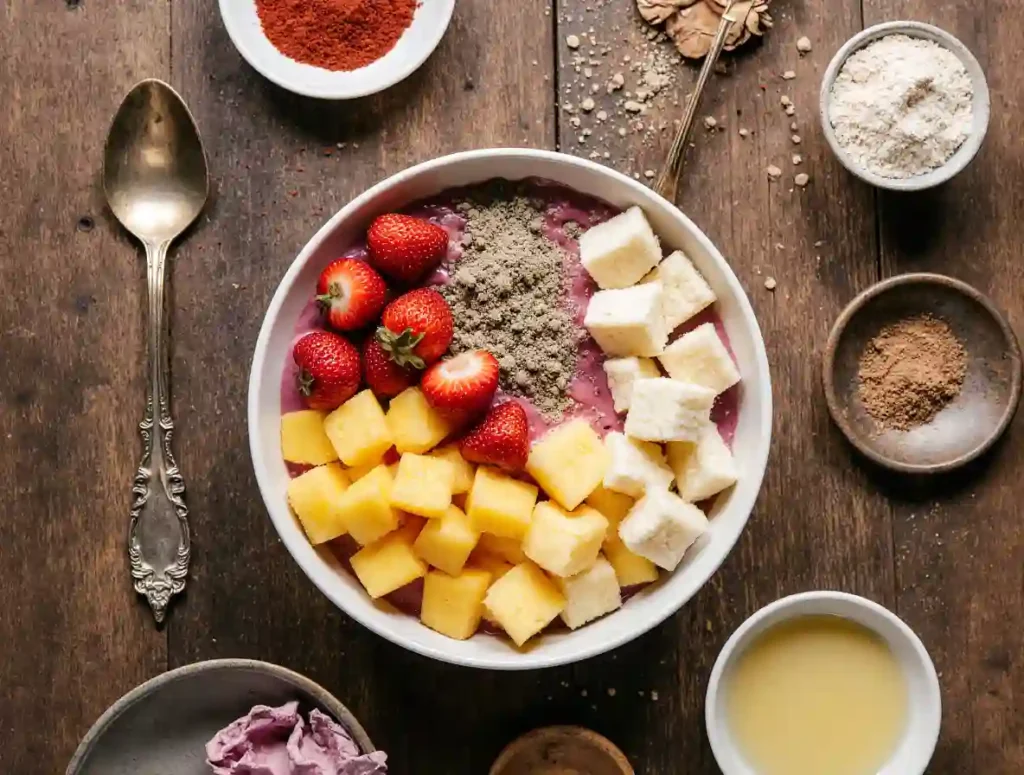
You’ll often find these simple base ingredients in any pitaya bowl:
- Frozen pitaya (also called dragon fruit)
- Banana for creaminess and sweetness
- A little liquid for blending, such as almond milk or coconut water
Beyond that, it’s easy to customize. Add mango, pineapple, or even a scoop of protein powder to make it more filling. For extra nutrients, toss in some flaxseed or chia seeds. I often use chia seeds to add fiber and texture, especially when I want a longer-lasting breakfast.
You can find frozen pitaya smoothie packs in most grocery store freezers. They usually come in individual serving sizes, which makes blending up a bowl quick and easy — perfect for busy mornings. That hot pink color? All-natural and even more beautiful in person.
Base, toppings, and flavor pairings
Once the base is blended, the fun really begins. Toppings can transform a basic pitaya bowl into something exciting. Whether you love tropical flavors or crave a crunchy, nutty finish, there’s no wrong way to top your bowl.
Here are a few go-to topping ideas:
- Fresh fruit like kiwi, strawberries, blueberries, mango, or pineapple
- Crunchy granola or cacao nibs for texture
- Coconut flakes, hemp seeds, or pumpkin seeds for a nutrient boost
- Almond butter or Greek yogurt for extra creaminess
When I want a tropical flavor profile, I’ll pair pitaya with juicy pineapple and mango, then finish it with toasted coconut. Other days, I go classic: sliced bananas, granola, and a drizzle of peanut butter.
Looking to try something new? Take inspiration from our pineapple cucumber salad, where sweetness meets freshness. The same flavor play works beautifully in a pitaya bowl, especially when paired with mint or lime zest.
And if you’re in the mood for a treat, crumble some vegan oatmeal cookies over the top — trust me, it’s like having dessert for breakfast but in the healthiest way. I’ve even experimented with savory-sweet combos using roasted air fryer sweet potato cubes. The contrast in texture and flavor makes the bowl unexpectedly satisfying.
Pitaya bowls are all about balance — creamy, crunchy, juicy, and refreshing. Whether you keep it simple or get a little adventurous, it’s easy to make each bowl your own.
Pitaya vs Acai & Nutrition Benefits
Pitaya vs Acai Bowl – what’s the difference?
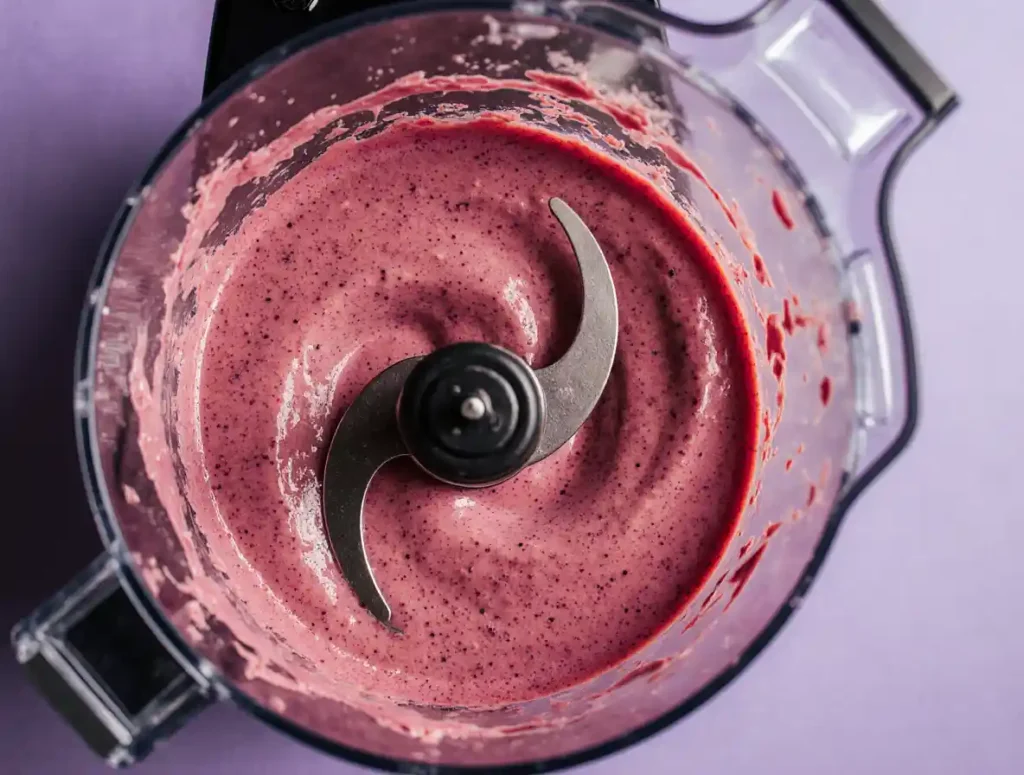
If you’ve ever stood in front of a smoothie bar menu debating between a pitaya bowl and an acai bowl, you’re not alone. They look similar — bright colors, thick blended bases, topped with fresh fruit and crunchy extras — but they’re not the same.
The main difference lies in the fruit used for the base. A pitaya bowl uses dragon fruit, usually pink-fleshed, while an acai bowl is made from frozen acai berries, which are deep purple and native to the Amazon rainforest. Acai has a slightly richer, earthier flavor compared to pitaya’s lighter, subtly sweet taste.
Pitaya bowls tend to have a smoother, creamier texture and a more vibrant color. They also blend easily with tropical fruits like pineapple, banana, and mango. Acai, on the other hand, pairs beautifully with berries, nut butters, and cocoa nibs.
Another big difference? Sugar content. Acai often comes unsweetened, which gives it a tart flavor. Pitaya is naturally sweet, especially when paired with banana, so you usually don’t need to add any sweetener. This makes pitaya bowls feel more like a treat, even though they’re still packed with goodness.
For a quick flavor guide:
- Pitaya bowl: bright, sweet, tropical
- Acai bowl: dark, tangy, earthy
If you’re craving tropical freshness, go pitaya. If you’re in the mood for something richer and more robust, acai might be your pick. I personally switch between the two depending on the season and what fruit I have on hand — both are beautiful, nourishing options.
Are pitaya bowls healthy for you?
Yes — pitaya bowls are a delicious way to pack in nutrients, especially when you build them with real, whole ingredients. Dragon fruit (pitaya) is low in calories but rich in antioxidants, vitamin C, and fiber. It’s also a good source of magnesium and beneficial plant compounds that support gut health and immunity.
Here’s what makes a well-balanced pitaya bowl a healthy choice:
- Fiber: helps digestion and keeps you feeling full
- Vitamin C: supports immunity and skin health
- Antioxidants: protect cells from stress and inflammation
- Magnesium: helps with muscle and nerve function
The key is what you add to your bowl. While the base is naturally nutritious, loading up with sugar-laden granola or sweetened nut butters can tip the balance. Instead, choose fresh fruit, raw nuts, unsweetened coconut, or even nutrient-dense toppings like chia seeds or flaxseeds.
If you’re looking for protein, try adding a scoop of Greek yogurt or blend in protein powder. I’ve even added protein bagels on the side for a more filling breakfast.
For a fun, savory twist that still feels balanced, I’ve tried serving pitaya bowls alongside light meals like mushroom poke. It’s a refreshing contrast and works surprisingly well for brunch or a casual lunch spread.
So yes, pitaya bowls are definitely healthy — especially when you keep your ingredients fresh, whole, and minimally processed. They’re proof that nourishing food can also be colorful, fun, and totally crave-worthy.
FAQ
What is a pitaya bowl made of?
A pitaya bowl is typically made with frozen pink pitaya (dragon fruit), blended with banana and a small amount of liquid like almond milk or coconut water. The base is thick and creamy, similar to soft-serve. It’s topped with a variety of fresh fruits, granola, coconut flakes, seeds, or nut butters — depending on your flavor preferences. You can keep it simple or load it with color and texture, just like we do with our keto breakfast bowl or cottage cheese pizza bowl.
What is a pitaya bowl vs acai bowl?
Pitaya bowls use dragon fruit as their base, while acai bowls use frozen acai berries. Pitaya has a sweeter, tropical flavor and a striking hot pink color. Acai tends to taste more earthy or berry-like. Pitaya is naturally sweeter, whereas acai is often blended with added sweeteners or other fruits to balance its tartness. Both are nutrient-rich and customizable, but pitaya bowls tend to be slightly lighter and brighter in flavor.
Are pitaya bowls healthy for you?
Absolutely. Pitaya is loaded with antioxidants, fiber, and vitamin C. It supports digestion, immune health, and even your skin. A well-balanced bowl made with fresh fruit and wholesome toppings can make for a nutrient-rich meal or snack. To keep it healthy, skip added sugars and stick with natural toppings like chia seeds, fresh berries, or even a few crumbles of our vegan oatmeal cookies for a fiber boost.
Are pitaya and dragon fruit the same thing?
Yes — pitaya and dragon fruit are two names for the same tropical fruit. “Pitaya” is more commonly used in Latin American countries, while “dragon fruit” is the more popular name in the U.S. Both refer to the same vibrant fruit that comes in different varieties, including white, yellow, and bright pink flesh. For pitaya bowls, the hot pink variety is typically used for its bold color and subtly sweet taste.
Conclusion
Whether you’re new to pitaya bowls or already a fan, there’s always room to get creative with flavors and toppings. They’re easy to make, packed with nutrients, and beautiful to look at — the kind of food that truly feels good to eat. With just a few ingredients and a blender, you’ve got the power to turn a regular morning into something bright, refreshing, and energizing.
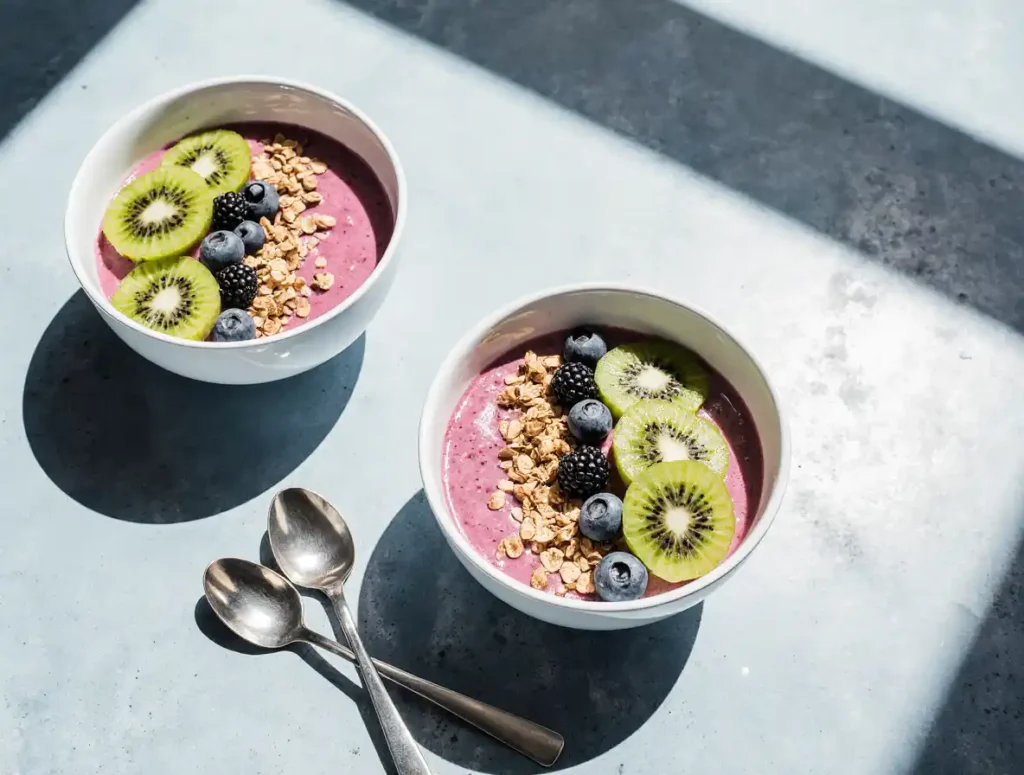
Pitaya bowls are more than just trendy — they’re a celebration of what’s possible when we bring together real ingredients with creativity and joy. And that’s exactly what we believe in here at Taste Our Dish.
If you’re craving more colorful, feel-good recipes, be sure to check out ideas like our mushroom poke or protein bagels — perfect companions to your next bowl adventure.
Now grab that blender. Your next favorite breakfast is waiting.


